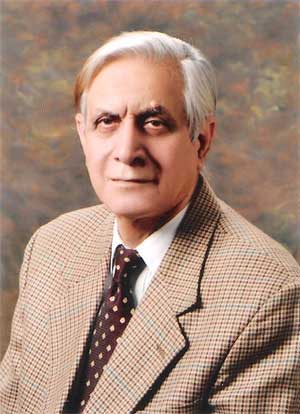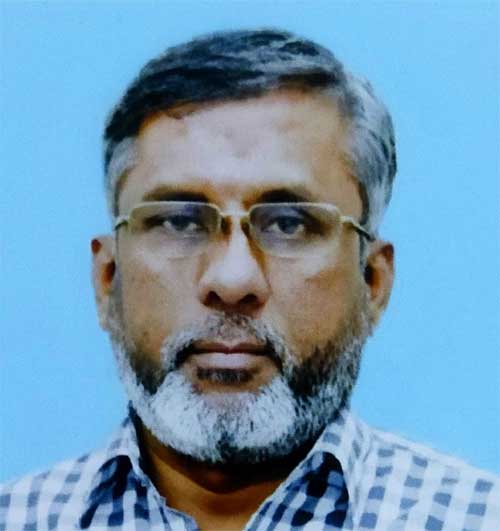RE-EMERGENCE OF MUSLIM RULE IN INDIAN SUBCONTINENT
August 14 1947, the Independence Day, we celebrate without getting into the Genesis of the event occurred in the second part of the 20th century. An event of geostrategic importance , not only it changed the map of the subcontinent after the departure of the British. It has global ramifications after the end of World War 2. Europe underwent a massive geographic change. Number of countries emerged after the defeat of the Axis. The Middle East and the Far East were torn apart, ushering new era in the world power politics. Pakistan’s birth is unprecedented in the modern history, born purely by democratic struggle. The violence later engineered by the Congress was to destabilize the emerging Pakistan.
Pakistan came into being due to the efforts of the Bengali and the Muslims of the Central India and Bihar. Historically Bengali Muslims always has political and educational edge over the rest of the Indians. It was they who forced the British to partition greater Bengal in 1906. It was resisted by the Hindus and the Congress creating so much of pressure on the British India that the British government was forced to undo the partition 1912. It was, then the Bengali leadership concluded they cannot win the battle and decided to join Muslim league , it was also formed in 1906 at Dhaka. The Muslims were in pathetic condition after War of Independence 1857. The wrath of the British fell maximum on the Muslims. The killing and torture of Muslims after the war supported by the Hindus is not being aptly projected by the authors of history either Muslims, Indians or British. In this scenario between 1857 and 1906 the only ray of hope emerged when Sir Syed realized the plight of the Muslims and decided to establish a school to educate Muslims in English and prepare them for the induction into the government machinery. It was also opposed by the right wing Ulema of the India who propagated that getting English education is tantamount merging into the modern culture of the British . The cultural heritage of the Muslims will be destroyed. Nevertheless, the events later proved that Sir Saeed Ahmed Khan was right. The political consciousness so created later had to become the torch bearer for the Muslims. At that time Punjab and Sind were mired in the yoke of Big landlords, Sardars and Khans. It is important , the independence struggle was solely carried out by the Muslims of central India and Bengal under the leadership of Jinnah . In 1936 elections on the face of Congress opposition and the propaganda Bengal Muslim league successfully formed a government, the first in subcontinent after 1857. In Punjab and Sind Situation was different where the unionist party were opposing Muslim league . Punjab followed Muslim league with change of wind in 1946
The death of Jinnah and Liaqat Ali Khan was a political catastrophe. The Bengali Muslims and their leadership were denied their rightful place in the government in the follow up. Shaheed Suharvardhi was mistreated and even declared traitor. It was later that he managed to come back and become the prime minister. The civil bureaucracy by then entrenched did not allow him to succeed. So was the situation that the Bengali leadership was pushed aside in the power corridors. There’s no doubt a lot was done after the partition to bring up the level of development in East Pakistan which at that time partition was zero. The political elite of west Pakistan continued to alienate the Bengali leadership and forcing them to create a new political party , The National Awami Party , later on became Awami League and now ruling Bangladesh. This unfortunate attitude of the West Pakistani leadership made it possible for the Indians to propagate against West Pakistan and exploit the fault lines so created. West Pakistan is eating away the resources of the East Pakistan was the theme . By 1970 in Civil Bureaucracy the number of appointments at the senior level were by and large made up. In the allocations and resources East Pakistan was being given preference and it can be verified from the government of Pakistan Economic review of 1969 . In the armed forces East Pakistan rifles were raised, and by 1970 ten East Bengal Regiments were on ground. Other arms and services, it was being ensured that they are being inducted at the ratio of 50%. Infect in Pakistani Air Force and Navy the percentage was quite large. East Pakistan Industrial Development Corporation was established which established number of industrial complexes .
Yet the perception is stronger than the logic. The Indian propaganda on one side,, the attitude of the West Pakistan politicians towards the East Pakistan politicians created alienation forcing them to create a new party which played havoc later on in the politics of Pakistan and was a major factor of catastrophe which was in the offing. There’s no doubt whatever comments one way forward towards the East Pakistan 1970 elections the fact remains that the majority party was not allowed by West Pakistani politicians to form the government. Further, geographic and strategic changes occurred in the first quarter of the Pakistan coming into being. Difficult to manage the government from Islamabad a territory 1000 miles apart with the enemy in between. Nevertheless, the March 71 parlays between the Avami League ,the President of Pakistan and the West Pakistani politicians in Dhaka were more or less successful. Mr. Bhutto did not budge from his stand insisting he should be part of the coalition government , an undemocratic demand. Branding the majority political party as traitors was the strategic blender on the part of Yahya government as well as west Pakistani political parties. Knowingly what India was up to, Indra Gandhi’s statement in Lok Sabha , they cannot remain unconcerned at the happening in East Pakistan. This and tragic judgmental error scenario were created by ourselves. We failed politically and militarily.
There is no doubt, the emergence of Pakistan in 1947, is the emergence of Muslim rule in subcontinent which was terminated 1857. Had there been no Pakistan there have been no Muslim rule either in today’s Pakistan or in today’s Bangladesh. I personally salute the vision of Quaid Azam. Unfortunately, we did not learn any lesson from the tragedy of East Pakistan. Pakistan continued to muddle itself in the Petty politics of self-interest without caring the changing worldwide geopolitical and strategic environment.
. We failed to create the institutions and failed in implementation of a consensus constitution which was drafted in 1973 against all odds. The present-day world events and the war going on in Ukraine clearly indicate the dangers facing Pakistan if we do not mend our ways. The Chinese after erecting China Wall learnt that it failed to protect them .They concluded it is the character of the nation which can guard itself against the enemies. The last hundred years we find the Chinese stressing on this core point. Pakistan today, yes we need infrastructure but we need two basic things first, the character building of the nation In all the three dimensions social, education and moral. And second, elimination of corruption. A way forward to safeguard the nation against the future dangers .




